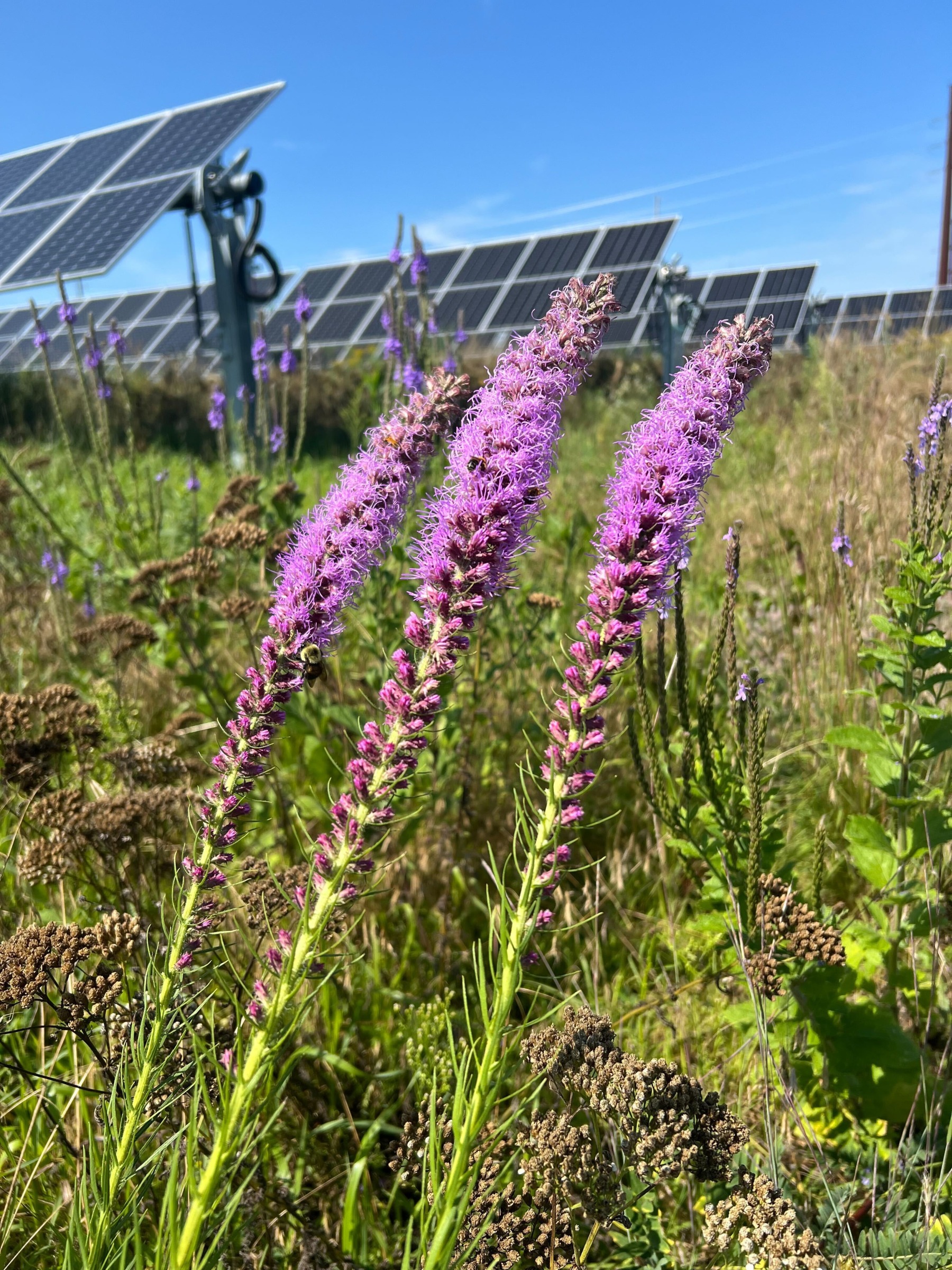Home » RESET: Renewable Energy Siting & Engagement for Tomorrow » Siting Review Process
Siting Review Process
Wisconsin’s Large-Scale Solar Approval Process
How Does Large-Scale Permitting Work?
In Wisconsin, the large-scale permitting process depends on the project’s megawatt size.
1 megawatt (MW) of solar uses an average of 7 acres and powers about 150 homes.
1-99.9 Megawatts
Local communities handle permitting large-scale solar projects up to 100 MW.
- Can use the permitting process to address health, safety, environmental, and zoning concerns.
- Cannot impose a moratorium on these projects.
- The PSCW may also review and decide on some projects below 100 MW that are proposed by a regulated public utility.
100+ Megawatts
The Public Service Commission of Wisconsin (PSC) has siting authority for all electric generation facilities 100 MW or larger, including large-scale solar projects.
Local government zoning processes do not apply, but communities are encouraged to participate in the review process and provide input.
- The PSC considers environmental, safety, and planning concerns communities have identified, for example in comprehensive plans or ordinances.
- The PSC collects public comments about a project via mail, online, and in-person at public hearings.
Siting Review Process
Any electric generation facility that is 100 megawatts or larger needs to obtain a certificate of public convenience and necessity (CPCN) from the PSC.
Below are the main project review milestones for large-scale solar and wind energy projects, and ways for members of the public to get involved. You can sign up to receive project updates on the PSC website, follow the commission calendar, provide a comment for the record, and attend open meetings.
Learn more about each step below, or visit the Public Service Commission’s page on Public Participation.
Developer applies to the PSC
Solar developers must submit an engineering plan and a Certificate of Public Convenience and Necessity (CPCN) application. The Public Service Commission and the Wisconsin Department of Natural Resources jointly review solar energy generation and energy storage projects.
Copies of the application are mailed to all city, town, and village clerks in the project area, and to the public libraries in the affected counties.
Developers may hold open house sessions where the public can learn more about the project.
What is in the Certificate of Public Convenience and Necessity (CPCN) application?
- Project overview
- Technical description of the project
- Project maps
- Construction sequence
- Potential impacts on natural and community resources
- Local government impacts
- Landowners affected and public outreach
- Waterway/wetland permitting activities
- DNR information on erosion control and stormwater management plans
- Utility-proposed projects may also require an Agricultural Impact Statement from the Wisconsin Department of Agriculture, Trade and Consumer Protection (DATCP)
PSC opens a Case Docket
The PSC opens a case for each project application. You can sign up to get email updates whenever a document is filed on the PSC’s website.
You can subscribe to a case file on the PSC’s website based on the case number.
PSC issues a Public Notification Letter
A letter notifying the public that the PSC review process has begun is mailed to property owners near the project, government officials, libraries, media, and other interested agencies and individuals. The letter will state the level of environmental review needed and provide contact details. The letter may describe the environmental scoping period where comments are gathered to start the environmental review process.
Optional Scoping Sessions
The PSC may host open houses to gather public input about the proposed project’s potential environmental impacts.
The public can also meet with PSC, DNR, and utility staff and ask questions at these scoping sessions.
Will there be an Environmental Impact Statement?
The PSC is required to complete either an Environmental Assessment (EA) or an Environmental Impact Statement (EIS) on all new large-scale solar projects. The type of review is determined by what type of project is proposed and where it would be located.
If the project is likely to have significant environmental impacts, an EIS is required.
There is an opportunity for public comment as the PSC works on either an EA or an EIS. See Public Comment Periods for more information.
Public Comment Periods
There are multiple opportunities for public comment on any PSC reviewed energy generation project. See Participating in Public Comments and Hearings for more information.
Scoping
There is a scoping comment period of at least 10 days on all new large-scale solar projects while the PSC prepares for an Environmental Assessment or Environmental Impact Statement.
Environmental Assessment (EA)
If an Environmental Assessment is required for project review, PSC and DNR staff will develop an EA that describes the impacts of the project and determines whether or not to develop an Environmental Impact Statement (EIS). Once the PSC makes that initial decision about whether an EIS is needed, there will be a 15-day public comment period and the public can submit comments about the PSC’s decision and the project’s environmental impacts. Staff will review those comments and decide on any changes to the EA or need for an EIS.
Environmental Impact Statement (EIS)
If an EIS is required for project review, a draft EIS will be published with a public comment period of at least 45 days. These comments will be entered into the record for consideration by the PSC.
Public comments can be submitted by mail, online, or in person.
See the PSC’s requirements of a public comment and suggestions for making effective comments.
Final Environmental Impact Statement (if needed)
If an Environmental Impact Statement is required for the project review, a Final EIS will be created that includes public comments from the draft EIS comment period, along with additional analysis.
The final EIS will be posted on the PSC website, and available at local clerks’ offices and public libraries.
Public Hearings
During the review of a CPCN application, the PSC must hold a public hearing on the proposed project.
Participants can give online, oral, or written testimony at Public Hearings. This testimony becomes part of the record for the Commission’s decision.
You can submit Public Comments by mail, online, or in person.
See the PSC’s requirements of a public comment and suggestions for making effective comments.
PSC makes a Final Decision
The Commission makes a final decision to approve, modify, or deny the project. Commission meetings are open to the public for observation. Open meetings can be observed (streamed live), and recordings are available after the meeting.
Visit the PSCW youtube site at https://www.youtube.com/@PSCWI
PSC issues an Order
The Commission’s decision is described in a written order to the applicant.
Project construction can begin
Once a project has a CPCN, as well as any required federal, state and local permits, they can begin construction.
Learn More About the Permitting Process
For a deeper dive, this flow chart created by the Wisconsin Legislative Council shows the PSC and DNR permitting process for large electric generating facilities.






